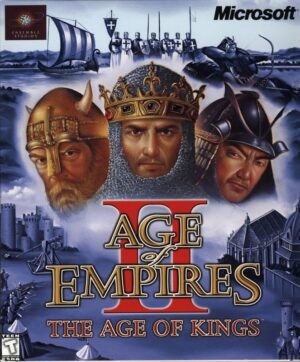Retro Replay Review
Gameplay
Dance Factory delivers a straightforward yet deeply engaging rhythm-action experience by centering gameplay around a dance mat and on-screen arrow cues. As arrows scroll upward in time with each track, players must step on the corresponding panels of the mat to maintain a combo and boost their score. The core mechanic is instantly intuitive—for newcomers, matching left, right, up, and down prompts feels both accessible and addictive.
Where Dance Factory truly shines is in its six distinct single-player modes. The standard mode offers bite-sized challenges, while Endurance mode puts your stamina to the test by playing an entire CD’s worth of songs without interruption. Fitness mode gamifies calorie counting, turning exercise into a competitive sport. Record mode lets creative players craft custom dance routines to their favorite tracks, giving an extra layer of personalization.
The novelty continues with Creature mode, where an on-screen animated character mirrors your steps in real time, adding a playful sense of companionship (or competition) as you improve your timing. EyeToy mode raises the stakes further: hand icons appear in sync with dance patterns, requiring you to interact via camera-tracked motions in addition to footwork. This hybrid approach broadens the appeal for those seeking more than just foot-based input.
Multiplayer options add a social dimension to the experience: two players can face off in head-to-head battles or team up in cooperative routines. The tournament bracket supports up to 16 participants, ensuring party nights can transform into full-blown dance-offs. Whether you’re competing for bragging rights or collaborating for the highest combined score, Dance Factory’s multiplayer is robust and thoroughly replayable.
Graphics
Visually, Dance Factory opts for a clean, functional interface that prioritizes readability over flash. Arrow prompts are crisp and brightly colored against a dark backdrop, ensuring you can anticipate and react with minimal confusion. The contrast between foreground cues and background visuals strikes a good balance between style and clarity, which is essential for timing-critical gameplay.
During Creature mode, the on-screen dancer is rendered in smooth, cartoonish animation, providing immediate visual feedback on your performance. Each successful step triggers fluid movements and celebratory animations, while missed arrows elicit humorous stumbles—adding personality without distracting from the rhythm. The character design is simple but expressive, making Creature mode a highlight for many players.
The background environments change subtly as you work through different tracks or CDs, ranging from neon-lit clubs to more abstract, pulsing shapes that react to the beat. These dynamic backdrops contribute to the sensation of being in a lively dance venue without ever overwhelming the important arrow indicators. EyeToy mode introduces additional on-screen hand icons that blend seamlessly into the visual scheme, preserving the game’s cohesive look.
Story
Dance Factory doesn’t follow a traditional narrative arc; instead, it invites players to craft their own musical journey. The premise is simple: insert any music CD into your PS2, and the game “manufactures” a custom dance routine on the spot. This procedural approach frames each play session as a unique event, with the player’s library serving as a personal soundtrack to their rising skills.
Thematically, you’re stepping onto the floor of an ever-evolving dance factory—an imaginary space where your favorite songs are deconstructed into rhythmic patterns. Although there’s no plot to follow, the progression through increasingly complex patterns mirrors the sense of working your way up from factory floor worker to master choreographer. Each successfully completed track feels like another gear in the machine turning in your favor.
Modes such as Endurance and Fitness add another layer to the “factory” metaphor: you’re not just dancing—you’re in shape, producing high-quality performances one CD at a time. Creature mode reinforces this playful factory environment, as your digital dance partner embodies the output of your efforts. In this way, Dance Factory’s “story” emerges organically through gameplay, giving players ownership over their rhythm-driven adventures.
Overall Experience
Dance Factory stands out in the rhythm-action genre by delivering near-infinite replay value. The ability to generate levels from any CD means you’re never limited by a fixed tracklist. Whether you’re spinning pop hits, rock anthems, or underground electronica, the game adapts on the fly—making it a perfect party centerpiece or personal workout tool.
The learning curve is approachable, yet the game offers depth for seasoned players seeking to refine timing accuracy and stamina. Fitness mode transforms your living room into a calorie-torching dance studio, while tournaments and multiplayer battles foster friendly rivalries. EyeToy integration and custom routine creation extend Dance Factory’s shelf life even further.
On the downside, the lack of official chart tracks may deter those who prefer well-known songs or licensed music videos. Visuals, while functional, lean more toward utility than flair. However, these trade-offs are minor compared to the freedom of plugging in your favorite CD and instantly having a new set of challenges.
Ultimately, Dance Factory offers a unique, flexible, and highly social dance game experience. Its blend of automatic pattern creation, diverse modes, and multiplayer options makes it a compelling choice for anyone with a PS2, a dance mat, and a collection of CDs. Whether you’re looking to break a sweat, host an unforgettable game night, or simply groove along to your own tunes, Dance Factory hits the right note.
 Retro Replay Retro Replay gaming reviews, news, emulation, geek stuff and more!
Retro Replay Retro Replay gaming reviews, news, emulation, geek stuff and more!






Reviews
There are no reviews yet.